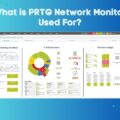What is Nagios Used For? Is it Any Good?
Nagios is an open-source monitoring tool designed to monitor various components of an IT infrastructure, providing real-time alerts and notifications in case of any issues or anomalies. It is aimed to help IT professionals with continuous monitoring of systems, services, logs and applications.
Businesses can use Nagios as a powerful monitoring tool to proactively track and manage their IT infrastructure, ensuring system uptime and minimizing downtime for improved operational efficiency. Additionally, Nagios also provides customizable reports and centralized monitoring, allowing businesses to gain insights, streamline operations, and make informed decisions.
In this article, we will address the question, “What is Nagios used for?” and delve into its features, components, and functionalities.
What can be monitored by Nagios?
Nagios is a versatile monitoring tool that can monitor various components of your IT landscape. Here are some examples of what can be monitored using Nagios:
Server resources
Nagios can monitor servers running on Linux or Windows operating systems. It can monitor various server resources, including CPU usage, memory utilization, disk space, and network traffic. This information can help administrators identify potential bottlenecks or resource-intensive processes.
System logs
Nagios can ingest logs from multiple sources and store them in a centralized location. This centralized location makes it easier to analyze logs from various sources together, allowing for better correlation of logs. By using Nagios to analyze logs, we can create alerts and notifications for critical errors and events. This proactive approach to troubleshooting helps in avoiding major outages and ensures the smooth operation of IT systems.
Network services and devices
Nagios offers several tools and features that serve different monitoring purposes. These tools include Nagios Network Analyzer, Nagios XI, and Nagios Fusion. Nagios Network Analyzer is designed for monitoring network traffic, bandwidth, and flow analysis across the entire IT infrastructure. Nagios Fusion provides a centralized management interface for all Nagios monitoring systems, making distributed network monitoring more convenient. Lastly, Nagios XI offers enterprise-class network monitoring, alerting, and analysis, providing enhanced insights into the network environment.
Hardware and environment monitoring
Nagios is a powerful tool renowned for its excellence in monitoring hardware and environmental conditions. It excels at overseeing various hardware devices like switches, routers, and servers, ensuring they work properly by keeping an eye on important details such as their health and temperature. Additionally, Nagios can also keep track of environmental factors like temperature, humidity, and power supply, which is especially useful in places like data centres and server rooms. By consistently monitoring these aspects, Nagios enables administrators to quickly spot potential hardware problems and take the necessary steps to avoid any disruptions to the system.
Benefits of Nagios
Nagios is a versatile, powerful, and flexible tool that monitors various devices and architectures, serving a wide range of use cases. The examples mentioned earlier are just a glimpse of its capabilities. Its adaptability makes it suitable for various IT environments, ensuring effective monitoring and maintenance of systems across different setups and configurations. Let us explore a few key benefits of Nagios:
- Flexible Reporting: Generates detailed and customizable reports for insights into system performance, availability, and historical data.
- Community Support: Benefits from a large and active open-source community, contributing plugins and extensions to enhance functionality.
- Cost-Effective Solution: As an open-source tool, Nagios is a cost-effective alternative to commercial monitoring options.
- Automatic Problem Resolution: Can automatically fix problems when detected, ensuring continuous availability of servers, services, applications, and the network.
- Real-Time Infrastructure Monitoring: Monitors the complete infrastructure in real-time, maintaining optimal system performance and minimizing disruptions.
- Customizable Notifications: Configure alerts via email, SMS, or other channels to ensure prompt notifications to the right people.
- Centralized Monitoring: Offers a single interface to monitor multiple resources, eliminating the need for multiple tools.
- Cloud monitoring: Nagios can also be used for cloud monitoring purposes. It can be easily configured to monitor your single, multi or hybrid cloud environments.
Conclusion
Nagios is a robust monitoring tool that empowers IT professionals to monitor and manage their IT infrastructure effectively. Its wide range of features, community support, cost-effectiveness, and real-time monitoring capabilities make it a valuable asset for organizations of all sizes and industries. By leveraging Nagios, businesses can ensure the reliability, availability, and performance of their IT systems, ultimately enhancing productivity and user satisfaction.




